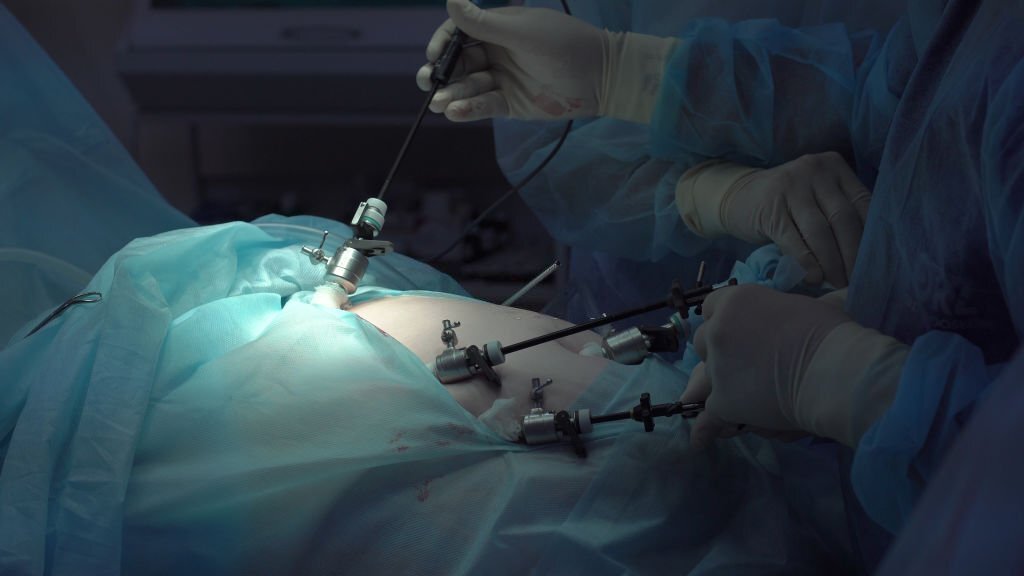What is a laparoscope?
Laparoscopic surgery involves making small incisions in the patient’s abdomen, through which a tiny camera and surgical device called a laparoscope is inserted to assess the state of the internal organs. Considered a form of minimally invasive surgery, this method offers various benefits, such as reduced scarring, pain, and blood loss, while also decreasing the impact on nearby organs and thus reducing the likelihood of complications arising from the procedure. Patients are able to recover and return to their daily tasks more quickly when compared to traditional open forms of surgery.
Nevertheless, laparoscopic surgery must only be performed by expert surgeons with vast experience in order to ensure that the risks posed to patients are minimized. In addition, certain factors can affect a patient’s suitability for this type of surgery, so any decisions on whether a patient can undergo this type of surgery must be made by the doctor in charge of treatment.

What types of laparoscopic surgery are currently in use?
Laparoscopic gallbladder surgery (laparoscopic cholecystectomy)
- A form of surgery used to remove the patient’s gallbladder, this procedure is currently widely used to treat gallstones. Except in cases where other associated conditions require consideration, it is not advised that stones be removed with an incision into the gallbladder because there is a risk that new stones will form soon after. A laparoscopic cholecystectomy is therefore considered one of the most efficient and effective forms of treatment for gallstones, with its minimally invasive nature yet another benefit of its use.
- Patients undergoing this procedure experience much less pain and fewer complications than those undergoing open abdominal surgery. Surgeons may detect previously undiagnosed conditions during laparoscopic procedures, such as cholecystitis, various layers of membrane surrounding the gallbladder, or other associated disorders that can affect the efficacy of surgery and require the surgeons to alter their strategy to an open form of surgery. However, the decision to do so is entirely at the discretion of the doctor in charge of treatment.
Laparoscopic appendectomy
- A form of laparoscopic surgery used to remove an inflamed appendix through abdominal incisions, this minimally invasive procedure is considered to have various benefits, including rapid recovery times and a fast return to daily tasks following the surgery due to reduced likelihood of complications. However, there are certain limitations to this form of treatment, with severe cases of appendicitis or those involving an infection spreading to nearby organs being unsuitable for this technique. Furthermore, this procedure must only be performed by expert surgeons with vast experience in this type of surgery in order to ensure the risks posed to patients are minimized.
Laparoscopic hernioplasty
- A form of laparoscopic surgery used to treat a hernia, this technique involves surgeons making tiny incisions in the patient’s abdomen, through which the laparoscope and other equipment is passed to treat the hernia. Once the procedure has been completed, surgeons will place mesh over the incisions and stitch them up to strengthen the abdominal area.
How is a laparoscopy performed?
These procedures involve making 2–4 incisions of 0.5–1cm in length in the patient’s abdomen, through which the laparoscope and surgical equipment is passed to perform the operation. The cameras provide surgeons with a high-resolution image of the patient’s interior on a monitor so that they can maneuver the equipment into place before performing the procedure. This enables a high degree of accuracy and safety. Once the operation is complete, the laparoscope and equipment are removed, and the incisions are stitched up.
Address
E-l, Panchsheel Garden, Naveen Shahdara, Delhi-110032
Call Us
9999353918
